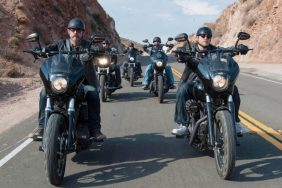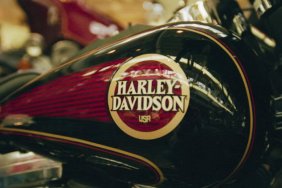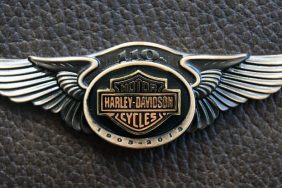
Sponsored by Harley-Davidson @harleydavidson #RollYourOwn
Motorcycles. Does any other word bring so many connotations with it? Raw, rugged, rebel – all of these come to mind. And what brand of motorcycle fits this description better than Harley-Davidson? None. Harleys are well known as the most powerful and rugged bikes on the road, but if that’s all you know about them, then you are missing quite a bit; Get out your knowledge sponge and take in our brief history of Harley-Davidson.
Beginnings
William A. Davidson, Arthur Davidson, Walter Davidson, Sr. and William S. Harley founded the Harley-Davidson Motorcycle Company based on a simple design of adding a motor to an average bicycle. They produced their first prototype in 1903 in Milwaukee, WI. The men opened their first factory only 3 years later in 1906. At that point they had graduated from modifying bicycles to building what we now know as a motorcycle. It didn’t take long before the public realized that these men were bringing much more to the table than a simple means of transportation, they were bringing a way of life.

World Wars
When the First World War rolled around, Harleys were introduced in the field. They became the first motorcycle ever to be used in a war. That’s not to say that the bikes hadn’t seen some action before that. On the contrary, Harley-Davidsons had been used in 1916 during a military incursion into Mexico, known as The Pancho Villa Expedition.
By the time the United States entered the 2nd World War, Harley Davidson was already providing motorcycles for military use. These bikes, the WL line, were specifically designed for the armed forces and they were eventually supplied for all Allied forces. Over 90,000 Harleys were used in the fight against the Axis powers.
A Cultural Icon
Harleys have always been known as the first in their class. Nothing reflected that more than the creation of the “hog” nickname.
In 1920, there was a popular team of motorcycle racers who rode Harleys in the Kansas area. Led by Ray Weishaar, these men won numerous races. They were fan favorites. Why? Well, they were local heroes and wonderful racers. They hailed from farm country and their fans identified with them. But most of all, their mascot was something that you couldn’t ignore. After a win, they’d often be caught doing a victory lap with a live hog riding with them on their bike.

This type of bold behavior epitomized Harley-Davidson. Harley’s motorcycle culture was characterized by a rebellious attitude.
In the 1970s Harley paid tribute to their heritage by producing bikes that harkened back to their old designs. Through the 80s and 90s, Harley-Davidson refined their motorcycles, finding the perfect formula for making a bike with power that also brought the rugged sensibility that their riders came to expect.
Since then, Harley-Davidson has continued to change and grow with the times. They’ve improved their bikes (from a technological perspective), but have never given up the V-Twin engine as a staple of their brand.
Photo Credit: Getty Images








